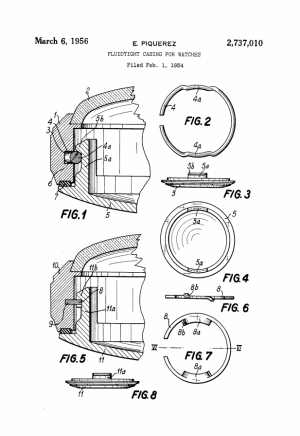Difference between revisions of "EPSA"
(→Links) |
|||
| Line 16: | Line 16: | ||
==Links== | ==Links== | ||
| − | [[EPSA Super-Compressor]] | + | * [[EPSA Super-Compressor]] |
| − | [[Diving Watches]] | + | * [[Diving Watches]] |
| − | [[Civilian Diving Watches]] | + | * [[Civilian Diving Watches]] |
==Links== | ==Links== | ||
Revision as of 13:58, 10 June 2020
EPSA - Ervin Piquerez S.A
History
The Piquerez family were a watch case manufacturer with limited success before WW2. After five decades of attempts at running a case making factory they switched to producing bicycles from 1935 onwards in the town of Bassecourt, in the French-speaking Jura canton of Switzerland. This proved a timely decision, because Switzerland subsequently sufferred from fuel shortagse during WWII and demand for bicycles rose!
The Piquerez family eventually managed to go back to producing watch components in 1939 [Piquerez SA (EPSA)], and in 1951 they relocated the assembly 32 Km away (20 miles) in the Ervin Piquerez factory in La Neuveville.
The company was releasing innovative watch case constructions, and in 1955 it filed to patent two revolutionary case constructions the Monobloc and the Compressor. Both designs met with success, and the Compressor, which used outer pressure to increase the water-resistance provided by the gaskets located between the crown, the back and the case, became a best-selling line.
Super Compressor
EPSA released their patented technology in 1956 and manufactured it up until the early 1970s. It was in this time that over 100 watchmakers including big names like Jaeger-LeCoultre, Hamilton, Bulova, Wittnauer, Benrus, IWC, Blancpain, Bucherer, Tissot, and Universal Geneve employed SC’s in their timepieces. Needless to say, it was popular—and for good reason. SC’s were a way for divers to keep time without worrying about air-release valves or the bulk of thicker cases and crystals. The essential nature of the ESPA Super Compressor was allowing for the case back of a watch to seal tighter as the watch dove deeper and deeper. Out of the water, the O-ring in the back of the watch received less pressure. Longevity in the seal was a result of this case design—meaning less maintenance after repeated wear and tear. Read more here.
The End
Final liquidation of all of ESPA’s assets took place in the early 1990s, but their dive cases were discontinued in the 1970s as they moved toward other sports-watch case designs.
